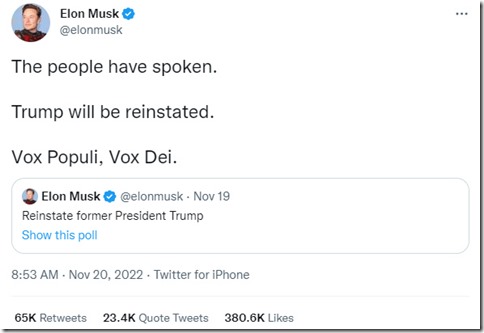Make no mistake, this was Australia’s Brexit.
 <heartbroken rant>
<heartbroken rant>
Seeing the referendum to give a Voice to Aboriginal and Torres Strait Islander peoples profoundly defeated across Australia today is heart-breaking and confusing.
My heart goes out to all Australians feeling let down, but especially, of course, to the Indigenous people of this country for whom this would have been, at least, one small step in the right direction.
As someone who researches online communication, digital platforms and how we communicate and tell stories to each other, I fear the impact of this referendum will be even wider still.
The rampant and unabashed misinformation and disinformation that washed over social media, and was then amplified and normalised as it was reported in mainstream media, is more than worrying.
Make no mistake, this was Australia’s Brexit. It was the pilot, the test, to see how far disinformation can succeed in campaigning in this country. And succeed it did.
In the UK, the pretty devastating economic impact of Brexit has revealed the lies that drove campaigning for it (as have former campaigners who admitted the truth was no barrier for them).
I fear most non-Indigenous Australians will not have as clear and unambiguous a sign that they’ve been lied to, at least this time.
In Australia, the mechanisms of disinformation have now been tested, polished, refined and sharpened. They will be a force to be reckoned with in all coming elections. And our electoral laws lack the teeth to do almost anything about that right now.
I do not believe that today’s result is just down to disinformation, but I do believe it played a significant role. I’m not sure if it changed the outcome, but I’m not sure it didn’t, either.
There was research that warned about the unprecedented levels of misinformation looking at early campaigning around the Voice. There will be more that looks back after this result.
But before another election comes along, we need more than just research. We need more than just improved digital literacies, although that’s profoundly necessary.
We need critical thinking like never before, we need to equip people to make informed choices by being able to spot bullshit in its myriad forms.
I am under no illusion that means people will agree, but they deserve to have tools to make an actually informed choice. Not a coerced one. Social media isn’t just entertainment; it’s our political sphere. Messages don’t just live on social media, even if they start there.
Messages might start digital, but they travel across all media, old and new.
I know this is a rant after a profoundly disappointing referendum, and probably not the best expressed one. But there is so much work to do if this country isn’t even more assailed by weaponised disinformation at every turn.
</heartbroken rant>
The Future of Twitter (Podcast)
I was pleased to join Sarah Tallier and The Future Of team to discuss how Twitter has changed since being purchased by Elon Musk, what this means for Twitter as some form of public sphere, and what alternatives are emerging (Mastodon!).
We discuss:
Will Twitter ever be the same since Elon Musk’s takeover? And what impact will his changes have on users, free speech and (dis)information?
Twitter is one of the most influential speech platforms in the world – as of 2022, it had approximately 450million monthly active users. But its takeover by Elon Musk has sparked concerns about social media regulation and Twitter’s ability to remain a ‘proxy for public opinion’.
To explore this topic, Sarah is joined by Tama Leaver, Professor of Internet Studies at Curtin University.
- Why does Twitter matter? [00:48]
- Elon rewinds content regulation [06:54]
- Twitter’s political clout [10:16]
- Make the internet democratic again [11:28]
- What is Mastodon? [15:29]
- Can we ever really trust the internet? [17:47]
And there’s a transcript here.
Banning ChatGPT in Schools Hurts Our Kids
![Learning with Technology [Image: “Learning with technology” generated by Lexica, 1 February 2023]](https://www.tamaleaver.net/wordpress/wp-content/uploads/2023/02/0fa4f0c3-f56a-41fb-b04a-a962eeb666f4.jpg) As new technologies emerge, educators have an opportunity to help students think about the best practical and ethical uses of these tools, or hide their heads in the sand and hope it’ll be someone else’s problem.
As new technologies emerge, educators have an opportunity to help students think about the best practical and ethical uses of these tools, or hide their heads in the sand and hope it’ll be someone else’s problem.
It’s incredibly disappointing to see the Western Australian Department of Education forcing every state teacher to join the heads in the sand camp, banning ChatGPT in state schools.
Generative AI is here to stay. By the time they graduate, our kids will be in jobs where these will be important creative and productive tools in the workplace and in creative spaces.
Education should be arming our kids with the critical skills to use, evaluate and extend the uses and outputs of generative AI in an ethical way. Not be forced to try them out behind closed doors at home because our education system is paranoid that every student will somehow want to use these to cheat.
For many students, using these tools to cheat probably never occurred to them until they saw headlines about it in the wake of WA joining a number of other states in this reactionary ban.
Young people deserve to be part of the conversation about generative AI tools, and to help think about and design the best practical and ethical uses for the future.
Schools should be places where those conversations can flourish. Having access to the early versions of tomorrow’s tools today is vital to helping those conversations start.
Sure, getting around a school firewall takes one kid with a smartphone using it as a hotspot, or simply using a VPN. But they shouldn’t need to resort to that. Nor should students from more affluent backgrounds be more able to circumvent these bans than others.
Digital and technological literacies are part of the literacy every young person will need to flourish tomorrow. Education should be the bastion equipping young people for the world they’re going to be living in. Not trying to prevent them thinking about it at all.
[Image: “Learning with technology” generated by Lexica, 1 February 2023]
Update: Here’s an audio file of an AI speech synthesis tool by Eleven Labs reading this blog post:
Watching Musk fiddle while Twitter burns
Seeing Elon Musk pledge to reinstate Trump on Twitter understandably starts another wave of folks leaving the platform, but if we all leave Twitter, won’t it just become what Trump dreamed Parler would be?

I’ve been on Twitter for more than 15 years, and it’s the platform that has most felt like home for the majority of that time. I’m heartbroken by what Musk has managed to do to the platform and the people who (mostly used to, now) run it in a few short weeks. His flagrant disregard for users or the platform itself is gutting. (I’m with Nancy Baym on what’s being lost here, even if the platform stays online and doesn’t fall over.)
For better or worse, the media broadly (and academia in many ways, to be fair) has used Twitter as a proxy of public opinion. That won’t change overnight. If mostly moderate and left-leaning voices leave, does that give Trump via Musk exactly what he always wanted?
Trump gets Twitter as a pulpit to say whatever half-formed thought escapes his head, and a crowd of MAGA voices to cheer him on at every step. While the echo chamber idea has been widely challenged, it feels like this could be how that chamber would actually cohere.
From outside the US, that anyone, let alone a meaningful percentage, of US citizens believe the Biden election was ‘stolen’ feels like it shows exactly how powerful and destructive the Trump’s Twitter can be.
I don’t want to be putting dollars in Musk’s pocket either as he burns users and employees alike, but I’m deeply conflicted about just leaving the space which still has 15 years of ‘public square’ reputation. I don’t have a solution, but I have many fears.
And, yes, like many I’ve set up on Mastodon to see how that space evolves.
Spotlight forum: social media, child influencers and keeping your kids safe online

I was pleased to join Associate Professor Crystal Abidin as panellists on the ABC Perth Radio Spotlight Forum on social media, child influencers and keeping your kids safe online. It was a wide-ranging discussion that really highlights community interest and concern in ensuring our young people have the best access to opportunities online while minimising the risks involved.
You can listen to a recording of the broadcast here.














